9 Things You Don't Know About the Hummer
The gas-guzzling original and the new EV are fascinating automotive oddballs.
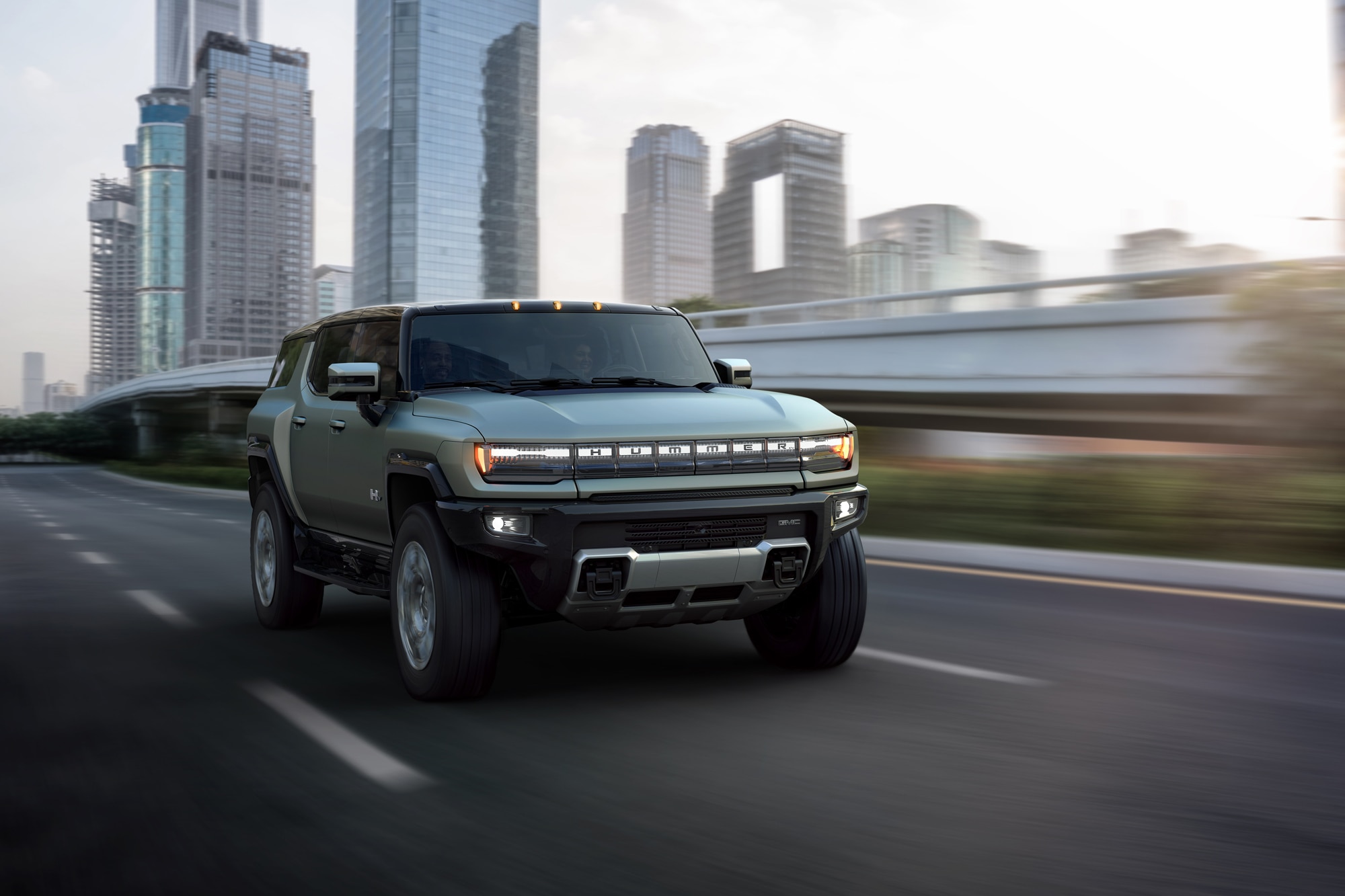 GMC
GMC
Both the original Hummer and the current GMC Hummer EV represent unusual deviations from the automotive norm. They are hardcore off-roaders designed with features seldom (or as yet) seen on other vehicles. Whether it's the old-school model's legendary toughness or the EV's impressive battery-powered performance, there are more than a few surprising facts about these beasts that make them worth getting to know a little bit better.
1. It Wasn’t Always Called the Hummer
How did the Hummer get its unusual name? The original military-spec model was dubbed the High Mobility Multipurpose Wheeled Vehicle, or HMMWV. It wasn't long before soldiers started referring to the truck as the Humvee or Hummer rather than spitting out that cumbersome acronym every time. When AM General began to manufacture a civilian version in 1992, it went with Hummer, a name that stuck around for nearly two decades of production and that General Motors (which acquired Hummer in 1999) recently revived as a nameplate for GMC's first EV.
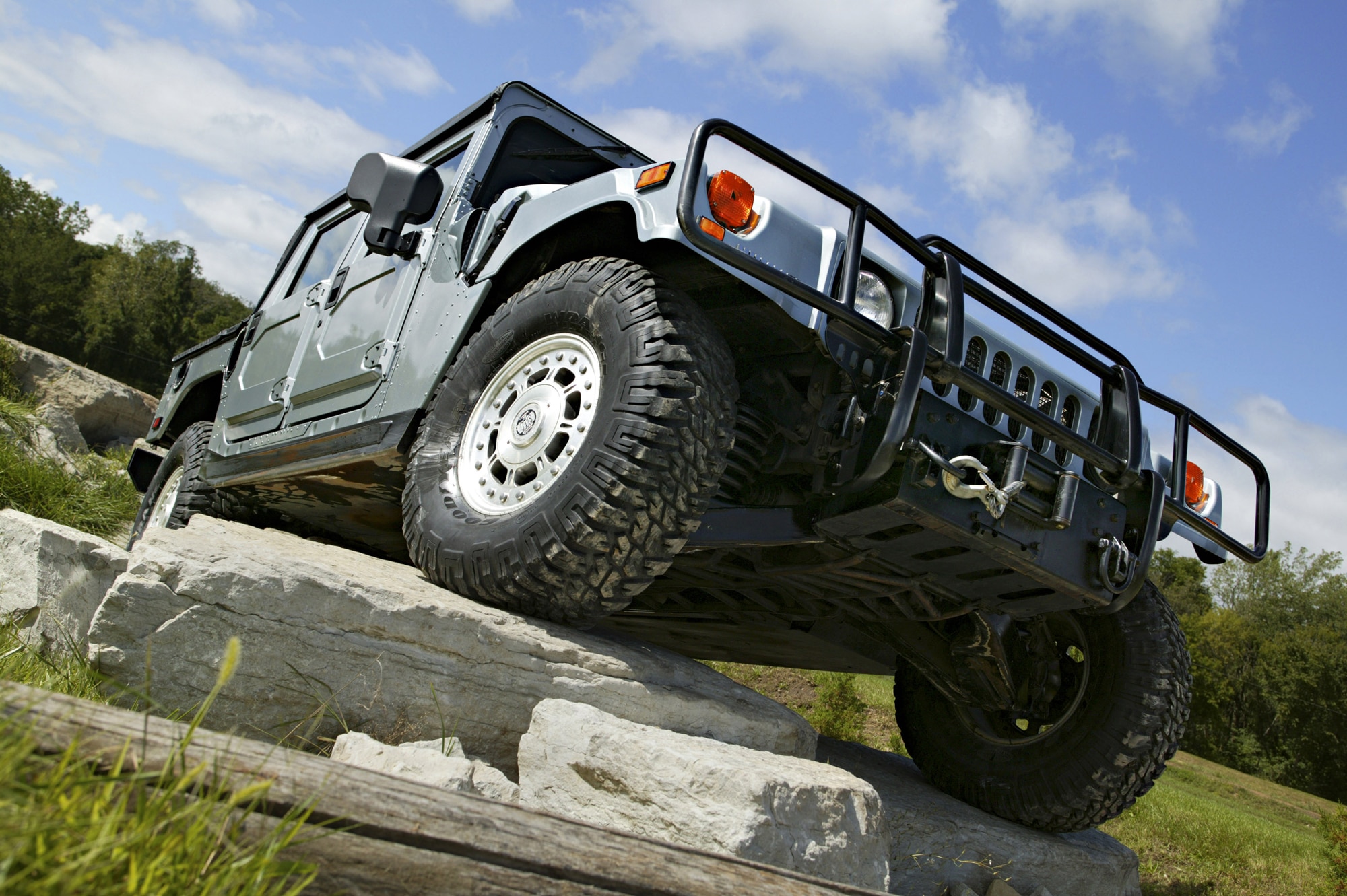 GMC
GMC
2. The Original Could Deflate and Inflate Its Own Tires
It's a common trick to air down a vehicle’s tires when heading off-road to help better distribute the weight of the vehicle over loose or soft surfaces. The Hummer allowed drivers to do that from inside the cabin thanks to its central tire inflation system, which not only released air from the tires but used an integrated compressor to refill them to the proper pressures. In the event of a puncture, the system also provided for limited driving by keeping the damaged tire pressurized as much as possible.
3. The Hummer is Not as Big as It Once Was
The old-school Hummer shocked American drivers back in the early 1990s when it first arrived on civilian roads due to its chiseled looks and massive body that dwarfed many of the cars around it. Flash forward 30 years and the Humvee comes across much smaller when compared against the current crop of full-size pickups. The Ford F-150 Raptor is actually 0.1 inch wider than the original Hummer, which measures 86.5 inches across. It's also a whopping four feet longer; in fact, the Hummer's 184.5 inch length makes it shorter than some modern family sedans, including the Toyota Camry (192.1 inches) and the Honda Accord (196.1 inches).
4. The First Hummer Was Seriously Slow
It's reasonable to assume that the Hummer's plus-size proportions meant it sported equally impressive horsepower. In actuality, gas-powered editions of the utility vehicle were outfitted with a modestly powered 5.7L V8 that generated a mere 190 hp and 300 lb.-ft. of torque. More than a couple of turbocharged four-cylinder engines best that output today. The Hummer's 6,766 lb. curb weight also took its toll on performance, with the SUV sandbagging its way to 60 mph in 18.1 seconds.
The 2006 Alpha edition featured a Duramax 6.6L turbo-diesel V8. With 300 hp and 520 lb.-ft. of twist on tap, it was almost five seconds quicker to 60 than the gas model.
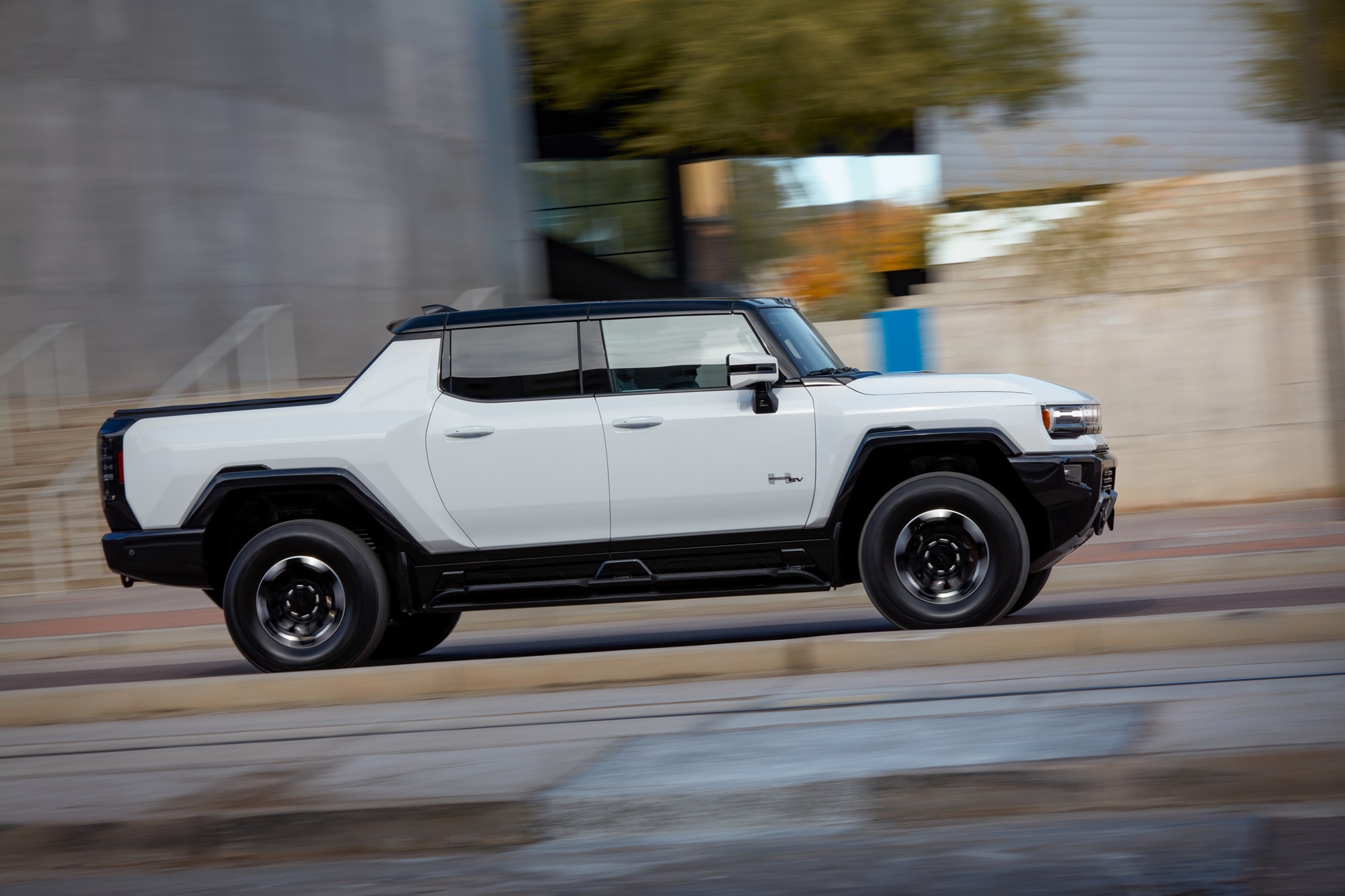 GMC
GMC
5. But the New One is Crazy Quick
Watts to Freedom (WTF) is GM's name for the Hummer EV's launch-control mode. It relies on sophisticated computer controls to monitor traction and make the best use of the vehicle's 1,000 electric horsepower, which propels the multiton behemoth to 60 mph in a shockingly scant 3.0 seconds flat. That's quicker than both a Porsche 911 Carrera (4.0 seconds) and a BMW M3 (4.1 seconds).
6. The Original Came in Four Body Styles
The HMMWV that the Hummer was based on was a versatile vehicle that the armed forces used for a variety of missions: as a weapons carrier, a troop transport vehicle, an ambulance, etc. That same philosophy carried over to the civilian model, which was sold as a wagon, a wagon with a slantback, a two-door pickup, and a four-door truck with either a hard or soft top. Of these, the regular wagon was by far the most popular, with 5,550 examples sold between 1992 and 2006.
 GMC
GMC
7. The Electric Hummer is a Real Heavyweight
The GMC Hummer EV's battery pack weighs an astounding 2,923 lbs. accounting for nearly a third of the truck’s 9,063 lb. curb weight. Let's put that into perspective: the Hummer's battery is heavier than entire vehicles, such as the Subaru BRZ (2,835 lbs.), the Honda Civic (2,877 lbs.), and the Hyundai Venue (2,612 lbs.). In fact, the GMC's battery pack weighs nearly half as much as the original Hummer's total curb weight.
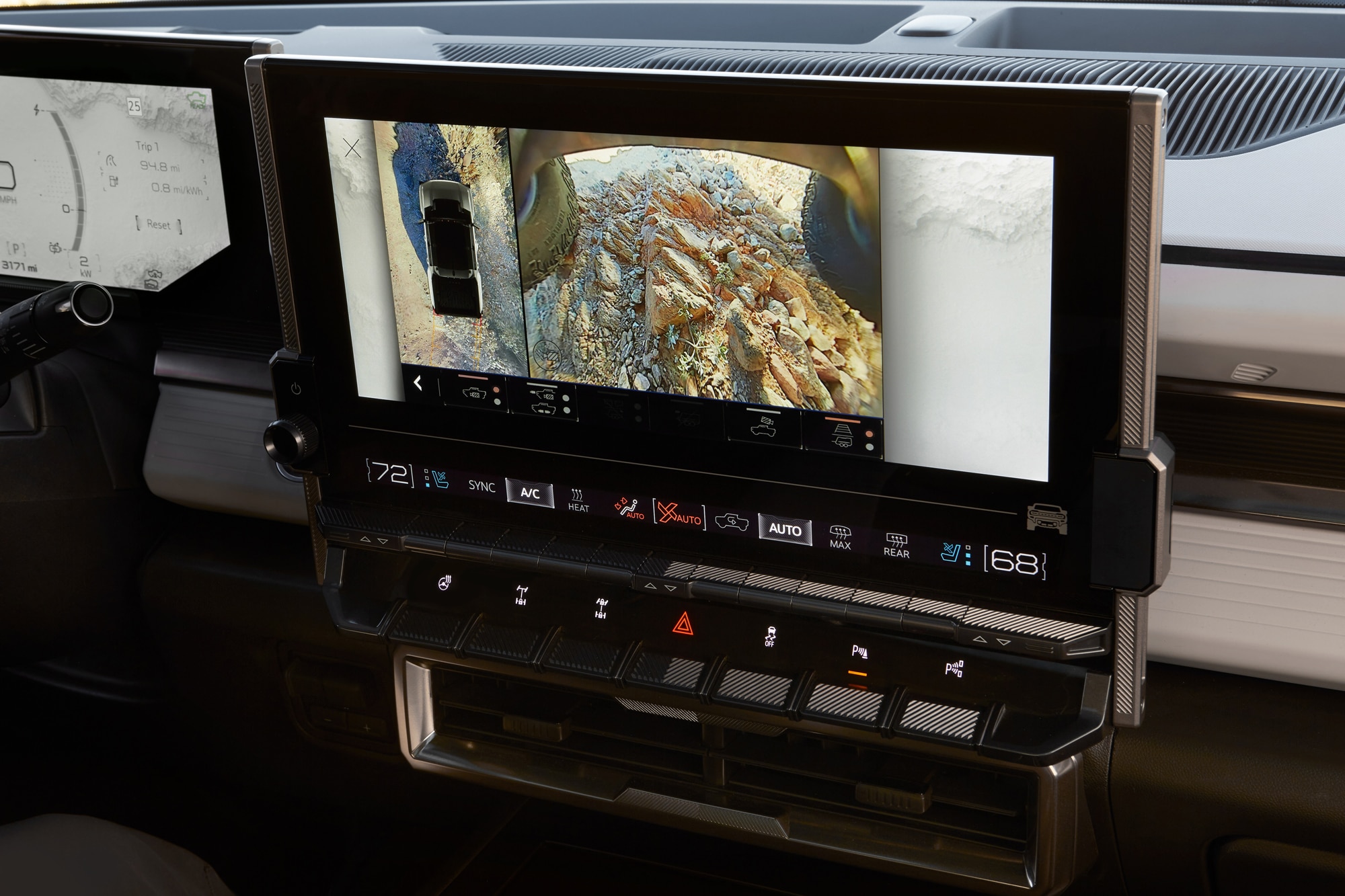 GMC
GMC
8. You Can “See” Through the EV’s Sheet Metal
Being able to see the terrain immediately in front of and next to your vehicle is key to navigating difficult off-road situations. In a vehicle as massive as the Hummer EV, it's not unusual to have large blind spots, not just over your shoulder, but ahead of the hood and around its perimeter. Enter the UltraVision camera system, which uses nine outward-facing cameras to provide a seamless video image of the vehicle’s surroundings to guide drivers up, over, and past obstacles, even when the Hummer is traveling as fast as 50 mph.
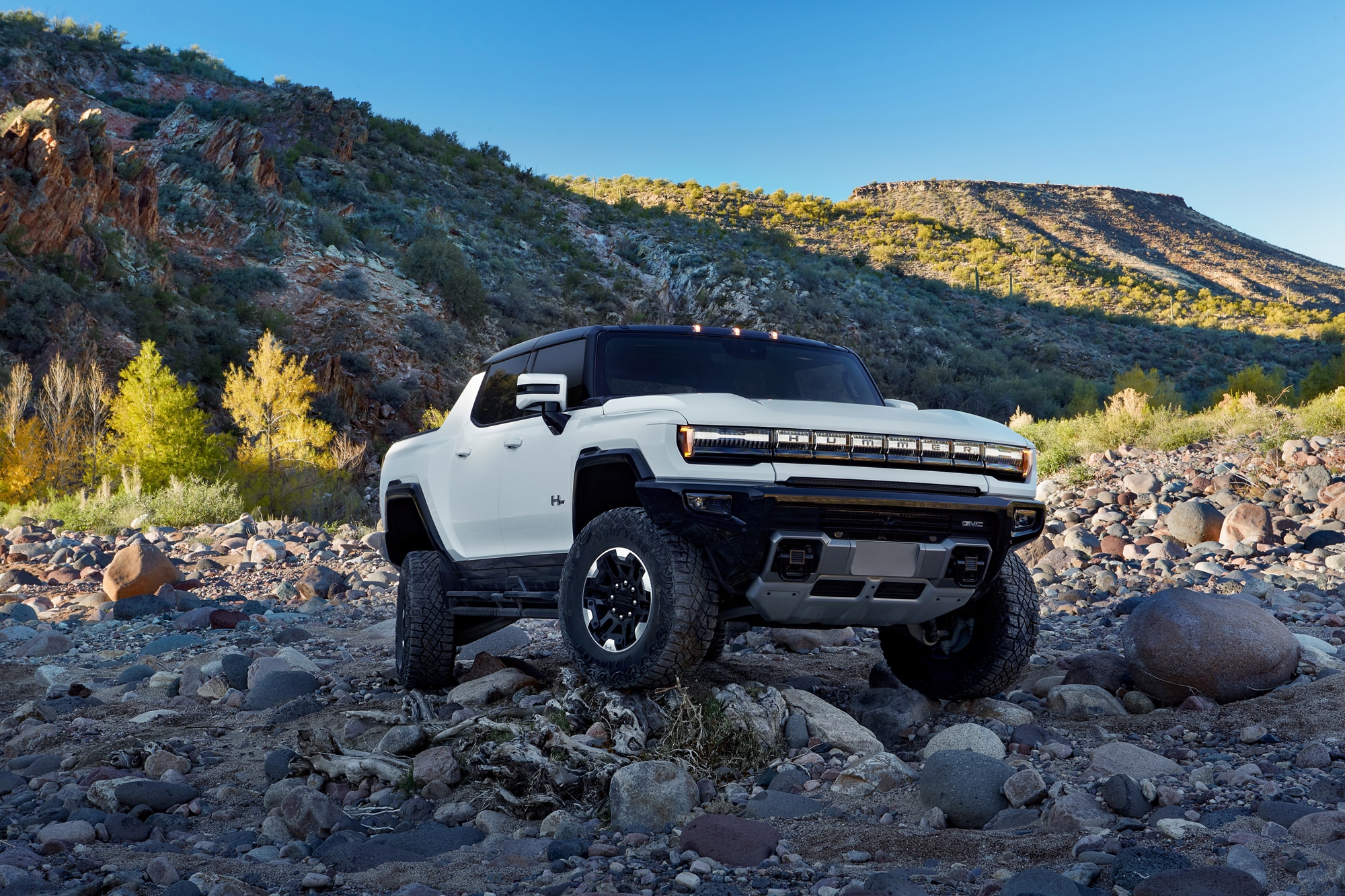 GMC
GMC
9. The GMC Hummer EV Can Drive Diagonally
Big-boned SUVs can sometimes feel unwieldy on tight trails, but the Hummer EV's Crab mode gives the gargantuan truck the ability to sidestep obstacles that would otherwise ensnare it. This unique feature of GMC’s four-wheel-steering system points each of the vehicle's tires in the same direction to allow for diagonal movement, allowing drivers to maneuver away from a tree or boulder. When the front and rear tires point in opposite directions, the four-wheel steering reduces the turning circle by 9.9 ft. for the SUV model and 7.2 ft. for the pickup.
Written by humans.
Edited by humans.
 Benjamin Hunting
Benjamin HuntingBenjamin Hunting is a writer and podcast host who contributes to a number of newspapers, automotive magazines, and online publications. More than a decade into his career, he enjoys keeping the shiny side up during track days and always has one too many classic vehicle projects partially disassembled in his garage at any given time. Remember, if it's not leaking, it's probably empty.
Related articles
View more related articles